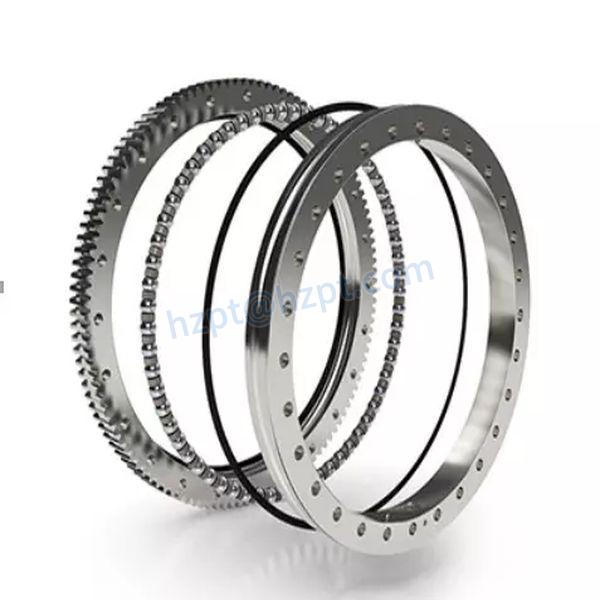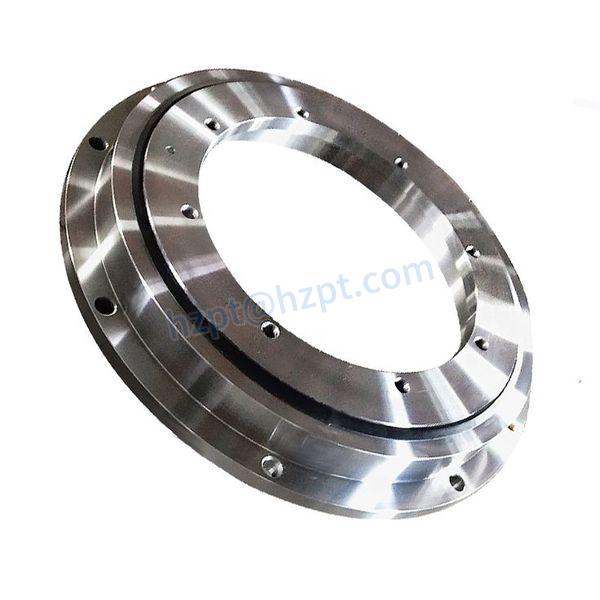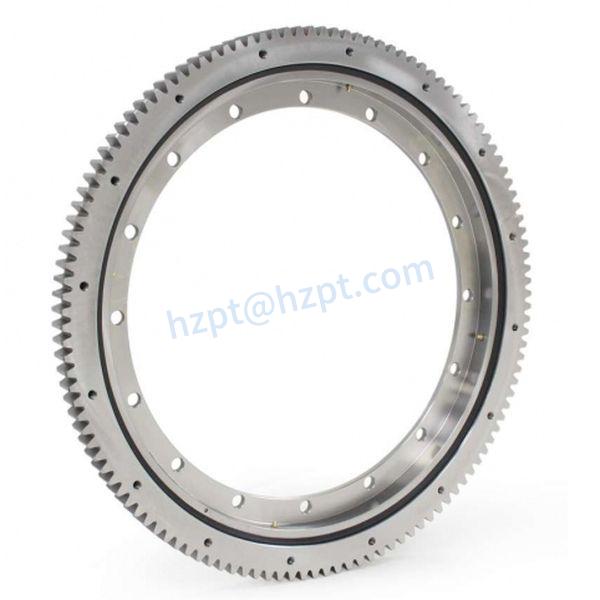Product Description
Please see details for slewing ring bearing Slewing Bearing
RKS.23 571
RKS.23 0541
RKS.23 0641
RKS.23 0741
RKS.23 0841
RKS.23 0571
RKS.23 1091
If you need more details, please feel free to contact us for designing and producing, Attn: Susan Yang
1. Why choose CZPT slewing bearings
Who we are?
We (HangZhou CZPT special heavy-duty and large bearing manufacturing CO., LTD) are a professional
bearing manufacturer in the world, established in 2
| Customized crossed roller slewing bearings with external gear | ||||
| Bearing Model | Outer Diameter/mm | Inner Diameter/mm | Height/mm | Weight/KG |
| RKS.921150303001 | 403.5 | 233 | 55 | 24 |
| RKS.12145712001 | 589.5 | 378 | 75 | 62 |
| RKS.121395711002 | 695 | 477 | 77 | 79 |
| RKS.122295711002 | 816 | 571 | 90 | 117 |
| RKS.221315711001 | 864 | 668 | 82 | 97 |
| RKS.22255711001 | 979 | 715 | 100 | 180 |
| RKS.22135711001 | 1080 | 886 | 82 | 120 |
| RKS.22265711001 | 1144 | 868 | 100 | 230 |
| RKS.324012324001 | 1289.5 | 980 | 114 | 330 |
| RKS.32235711001 | 1296 | 980 | 114 | 340 |
| RKS.425065711001 | 1475.5 | 1080 | 110 | 490 |
| RKS.425065717101 | 1475.5 | 1080 | 110 | 480 |
| RKS.425062621001 | 1475.5 | 1080 | 110 | 480 |
| RKS.427571711001 | 1604 | 1205 | 130 | 620 |
| RKS.427050403001 | 1804.8 | 1430 | 141 | 710 |
| Customized crossed roller slewing bearings with internal gear | ||||
| RKS.111285711002 | 562 | 384.6 | 60 | 42 |
| RKS.212145716001 | 825 | 567.5 | 90 | 133 |
| RKS.211435711001 | 972 | 785.6 | 82 | 110 |
| RKS.21265711001 | 1177 | 965.1 | 90 | 155 |
| RKS.211445711001 | 1172 | 961 | 90 | 182 |
| RKS.312415711001 | 1316 | 1082.1 | 105.5 | 260 |
| RKS.312415712001 | 1316 | 1082.1 | 105.5 | 260 |
| RKS.312295712001 | 1316 | 1082 | 105.5 | 260 |
| RKS.313500404001 | 1316 | 1038.8 | 102 | 370 |
| RKS.314315711001 | 1447.8 | 1038.8 | 104.65 | 425 |
| RKS.413295713001 | 1495 | 1164.8 | 110 | 440 |
| RKS.1 | 2290 | 2091 | 70 | 290 |
| Customized crossed roller slewing bearings without gear | ||||
| RKS.921155203001 | 403.5 | 233 | 55 | 25 |
| RKS.121405257101 | 589.5 | 378 | 75 | 64 |
| RKS.121395157102 | 695 | 477 | 77 | 84 |
| RKS.122295157102 | 816 | 571 | 90 | 125 |
| RKS.223475157101 | 979 | 715 | 100 | 195 |
| RKS.22265717101 | 1144 | 868 | 100 | 230 |
/* January 22, 2571 19:08:37 */!function(){function s(e,r){var a,o={};try{e&&e.split(“,”).forEach(function(e,t){e&&(a=e.match(/(.*?):(.*)$/))&&1
| Rolling Body: | Roller Bearings |
|---|---|
| The Number of Rows: | Multi-column |
| Outer Dimension: | Extra Large (440mm) |
| Material: | Bearing Steel |
| Spherical: | Non-Aligning Bearings |
| Load Direction: | Radial Bearing |
| Samples: |
US$ 300/Piece
1 Piece(Min.Order) | |
|---|
| Customization: |
Available
| Customized Request |
|---|

Are there any Specific Design Considerations when Using Slewing Bearings in Heavy-Duty Applications?
When utilizing slewing bearings in heavy-duty applications, several specific design considerations are essential to ensure reliable performance, safety, and longevity. Here are key factors to keep in mind:
- Bearing Selection:
Choose slewing bearings with higher load-carrying capacities that are specifically designed for heavy loads. Opt for designs that distribute loads evenly and minimize stress concentrations.
- Load Distribution:
Heavy-duty applications often involve uneven load distribution due to various operational conditions. Bearing designs should account for these variations to prevent premature wear and failure.
- Material Selection:
Select materials that can withstand heavy loads, shock loads, and potential impacts without deformation or fatigue. High-strength steels and advanced materials with excellent mechanical properties are often preferred.
- Rolling Element Size and Quantity:
Increase the size and quantity of rolling elements to distribute heavy loads more effectively. Larger and more rolling elements can handle higher forces while reducing stress on individual elements.
- Lubrication and Sealing:
Heavy-duty applications generate more heat and friction. Use appropriate lubrication methods and consider advanced sealing solutions to ensure proper lubricant retention and prevent contamination.
- Mounting and Alignment:
Ensure accurate mounting and alignment to prevent unnecessary stress on the bearing components. Misalignment can lead to premature wear and reduced bearing life.
- Structural Integration:
Integrate the slewing bearing into the overall machine design, considering factors like structural support, load paths, and interfaces with other components.
- Dynamic Loading:
Heavy-duty applications often involve dynamic loading scenarios. Consider factors such as impact loads, acceleration, and deceleration when designing the bearing and its supports.
- Heat Dissipation:
Heavy loads and continuous operation can generate heat. Design the bearing housing and cooling systems to dissipate heat effectively and prevent overheating.
- Maintenance Access:
Design the bearing arrangement to allow for convenient maintenance and inspections. Access to lubrication points, seals, and other components should be easy to facilitate regular upkeep.
- Load Surges and Shock Absorption:
Heavy-duty applications might experience sudden load surges or impacts. Incorporate shock-absorbing mechanisms or dampers to protect the bearing from excessive forces.
In summary, heavy-duty applications demand careful consideration of bearing selection, materials, load distribution, lubrication, and other design elements to ensure the reliable and durable performance of slewing bearings under substantial loads.

How does Proper Lubrication Impact the Performance and Longevity of Slewing Bearings?
Proper lubrication plays a crucial role in enhancing the performance and extending the longevity of slewing bearings. Here’s how it impacts these aspects:
- Reduced Friction and Wear:
Lubrication forms a protective layer between the rolling elements and raceways, reducing friction and wear. This minimizes surface contact and prevents metal-to-metal contact, leading to less wear and extended bearing life.
- Heat Dissipation:
Lubrication helps dissipate heat generated during operation. Adequate heat management prevents overheating, which can otherwise lead to premature bearing failure and reduced efficiency.
- Corrosion Protection:
Lubricants with anti-corrosion properties form a barrier that protects bearing surfaces from moisture and environmental contaminants. This is crucial in preventing rust and corrosion, especially in challenging operating environments.
- Sealing Effect:
Lubrication can enhance the sealing effect of bearing seals, preventing the ingress of dust, dirt, and other particles. This maintains the integrity of the bearing’s internal components and reduces the risk of contamination-related failures.
- Noise and Vibration Reduction:
Properly lubricated bearings generate less friction and operate more smoothly, resulting in reduced noise and vibration levels. This is particularly important in applications where noise reduction is essential.
- Improved Efficiency:
Effective lubrication minimizes energy losses due to friction, leading to improved overall efficiency of machinery. This is significant in applications that require high performance and energy savings.
- Prevention of Micro-Movements:
Lubrication helps prevent micro-movements between the rolling elements and raceways, reducing wear caused by repeated impacts and vibrations during operation.
- Maintenance Reduction:
Proper lubrication reduces the need for frequent maintenance and replacement of bearings. This not only saves time and resources but also contributes to increased uptime and reduced operational disruptions.
- Longevity:
By reducing wear, preventing corrosion, and managing heat, proper lubrication significantly extends the lifespan of slewing bearings. This, in turn, contributes to improved equipment reliability and reduced lifecycle costs.
In conclusion, proper lubrication is essential for optimizing the performance, efficiency, and durability of slewing bearings. Regular maintenance and adherence to manufacturer-recommended lubrication intervals ensure that the bearings operate smoothly and consistently over their operational life.

What is a Slewing Bearing and How Does It Work?
A slewing bearing, also known as a turntable bearing, is a specialized type of rolling-element bearing designed to handle axial, radial, and moment loads simultaneously. It allows rotational movement between two parts while supporting the loads applied to them. Slewing bearings are commonly used in various applications such as cranes, construction equipment, wind turbines, and industrial machinery.
At its core, a slewing bearing consists of multiple components, including an outer ring, an inner ring, rolling elements (balls or rollers), and in some designs, a gear or teeth arrangement. The outer ring is typically stationary and mounted to a fixed structure, while the inner ring is connected to the rotating part. The rolling elements provide smooth movement between the two rings, enabling rotation.
Slewing bearings work by minimizing friction and distributing loads effectively across the rolling elements. When a rotational force is applied to the inner ring, the rolling elements facilitate the smooth rotation of the inner ring relative to the outer ring. The rolling elements are positioned within raceways or grooves in the rings, ensuring proper contact and load distribution.
The addition of gears or teeth to the slewing bearing design enables the transmission of torque between the inner and outer rings. This feature is particularly useful when precise rotation control is required, as seen in applications like cranes and heavy machinery.
In summary, a slewing bearing functions as a rotational joint that can support various loads and movements. Its design, which includes rolling elements and optional gear systems, allows it to manage axial, radial, and moment loads while facilitating smooth rotation between connected parts.


editor by CX 2024-03-12
by
Leave a Reply